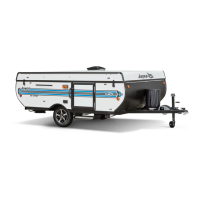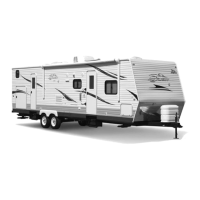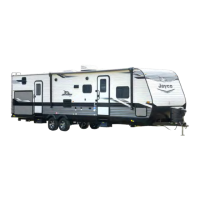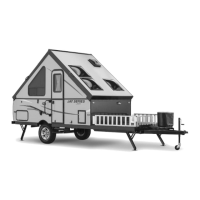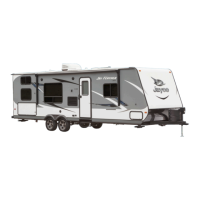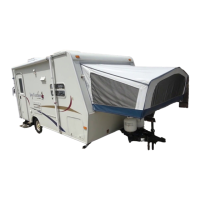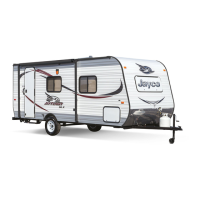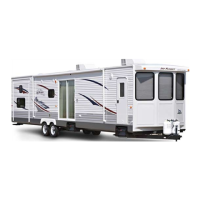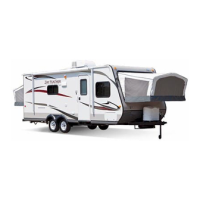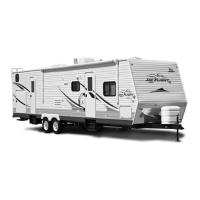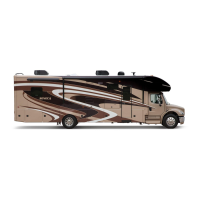After the RV is completely set up and you are
prepared for camping enjoyment, use the
following steps for propane operation:
1. Close ALL burner valves, controls and pilot
light valves.
2. Open the main valve in the propane
container slowly to avoid a fast rush of
propane vapor through the excess flow
valve causing propane “freeze.” Should
you experience propane “freeze-up” close
the main valve and wait 15 minutes before
trying again.
3. Listen carefully as propane begins to flow.
If a hissing noise is heard for more than
one or two seconds, close the main valve
and contact your RV dealer to have the
propane system tested.
4. Light the appliances as needed and
directed in the appropriate appliance
manufacturer’s owner manual located in
the Goodie Bag.
Make sure that you read and fully understand
ALL safety requirements for handling and
operation of the propane system. The Goodie
Bag contains OEM operator’s manuals for the
various appliances hooked to your propane
system. The propane system provides added
benefits to your camping enjoyment; however,
it must be handled with care. If you have any
questions or concerns, consult with your RV
dealer and/or the specific OEM.
If you have double cylinders on your RV, use
only one at a time. Otherwise, the propane
supply will be drawn equally from both
cylinders until the supply has been totally
exhausted. Using one cylinder until it is empty,
then using the second cylinder will allow you to
fill the empty cylinder at your convenience
without running totally out of propane.
If flooding is predicted for your area, shut OFF
each propane cylinder valve before the water
rises. If the propane system has been flooded,
do not turn it back ON until it has been checked
by your RV dealer or a qualified propane
service technician.
CALCULATING PROPANE USAGE
It is important to remember that (if applicable)
your furnace, refrigerator, water heater and
range all may use propane to operate. Each
has a different BTU rating, and you will need to
consider them to determine how long your
propane supply will last. Most RV gas
appliances are operated intermittently.
Propane consumption depends on individual
use of appliances and the length of time
operated. Unless there is heavy use of hot
water, the water heater consumption of
propane is minimal. During cool temperature
or high wind conditions, furnace consumption
can be extremely high.
To calculate your propane supply, take the
BTU ratings for your propane appliances and
divide that into the BTU availability. Each
gallon of propane (3.86 liters) produces about
91,500 BTU’s (46,514 kilojoules) of heat
energy.
TRAVELING WITH PROPANE
Use care when fueling your tow vehicle. Make
certain your propane container is properly
fastened in place. The label listed below
should be kept permanently affixed to your RV:
Some states prohibit propane appliances to be
operated during travel, especially in
underground tunnels. Make sure you know the
laws for the areas where you travel.
33
SECTION 4
PROPANE SYSTEM
DANGER
ALL PILOT LIGHTS, APPLIANCES
AND THEIR IGNITORS (SEE
OPERATING INSTRUCTIONS) SHALL
BE TURNED OFF BEFORE REFUELING
OF MOTOR FUEL TANKS AND/OR
PROPANE CONTAINERS.
FAILURE TO COMPLY COULD RESULT
IN DEATH OR SERIOUS INJURY.
AD-05
Fig. 4.8 Refueling warning label

